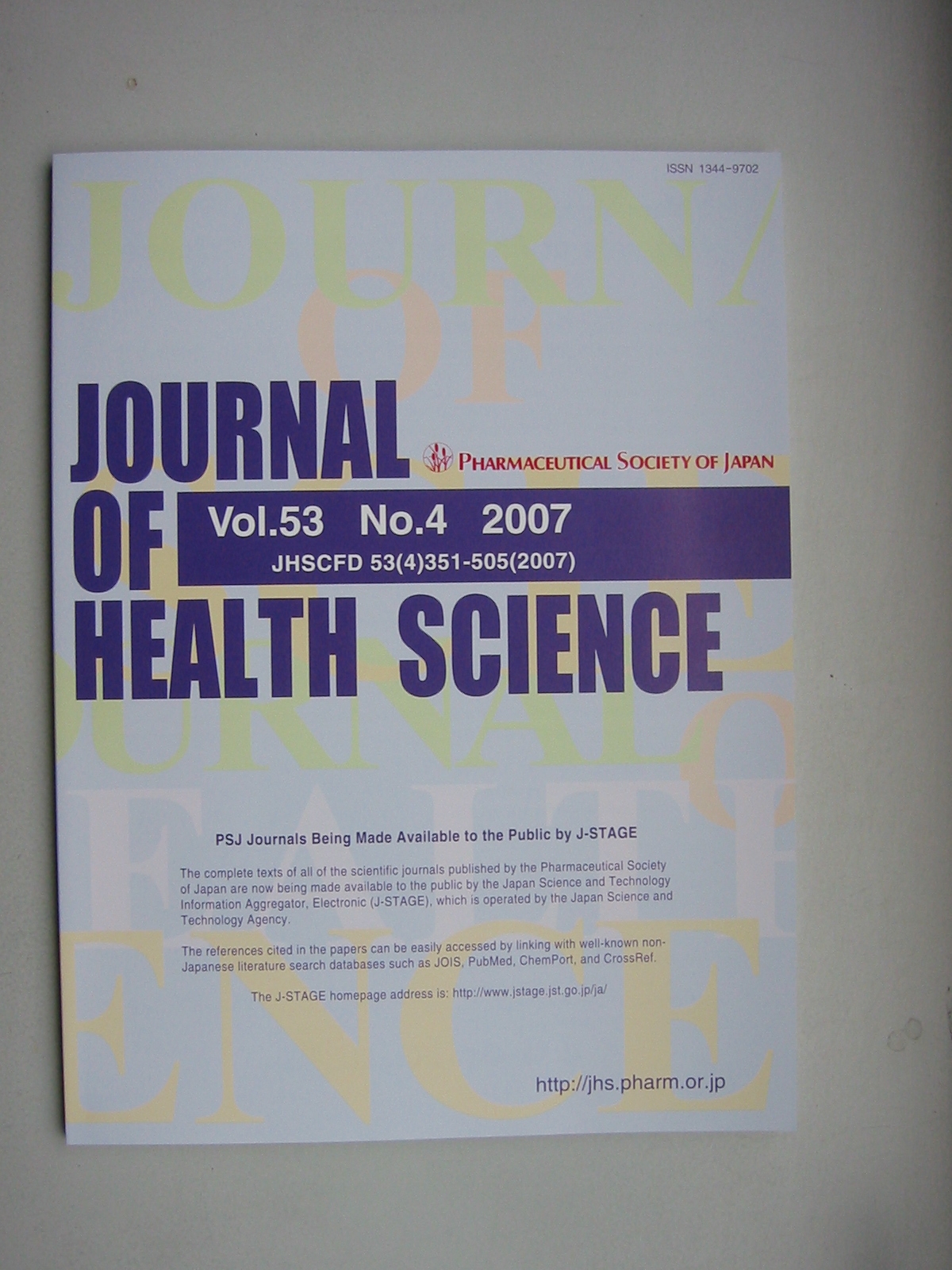Volume 54, Issue 6
Displaying 1-17 of 17 articles from this issue
- |<
- <
- 1
- >
- >|
MINIREVIEW
-
2008Volume 54Issue 6 Pages 615-622
Published: 2008
Released on J-STAGE: December 01, 2008
Download PDF (525K)
REGULAR ARTICLES
-
2008Volume 54Issue 6 Pages 623-628
Published: 2008
Released on J-STAGE: December 01, 2008
Download PDF (244K) -
2008Volume 54Issue 6 Pages 629-637
Published: 2008
Released on J-STAGE: December 01, 2008
Download PDF (556K) -
2008Volume 54Issue 6 Pages 638-644
Published: 2008
Released on J-STAGE: December 01, 2008
Download PDF (1696K) -
2008Volume 54Issue 6 Pages 645-653
Published: 2008
Released on J-STAGE: December 01, 2008
Download PDF (566K)
RESEARCH LETTERS
-
2008Volume 54Issue 6 Pages 654-660
Published: 2008
Released on J-STAGE: December 01, 2008
Download PDF (225K) -
2008Volume 54Issue 6 Pages 661-664
Published: 2008
Released on J-STAGE: December 01, 2008
Download PDF (210K) -
2008Volume 54Issue 6 Pages 665-670
Published: 2008
Released on J-STAGE: December 01, 2008
Download PDF (500K) -
2008Volume 54Issue 6 Pages 671-674
Published: 2008
Released on J-STAGE: December 01, 2008
Download PDF (83K) -
2008Volume 54Issue 6 Pages 675-681
Published: 2008
Released on J-STAGE: December 01, 2008
Download PDF (109K) -
2008Volume 54Issue 6 Pages 682-685
Published: 2008
Released on J-STAGE: December 01, 2008
Download PDF (122K) -
2008Volume 54Issue 6 Pages 686-691
Published: 2008
Released on J-STAGE: December 01, 2008
Download PDF (573K) -
2008Volume 54Issue 6 Pages 692-696
Published: 2008
Released on J-STAGE: December 01, 2008
Download PDF (185K)
RAPID COMMUNICATIONS
-
2008Volume 54Issue 6 Pages 697-702
Published: 2008
Released on J-STAGE: December 01, 2008
Download PDF (249K) -
Difference in Subcellular Distribution of Mevalonate Pyrophosphate Decarboxylase Occurs by Cell Type2008Volume 54Issue 6 Pages 703-710
Published: 2008
Released on J-STAGE: December 01, 2008
Download PDF (581K) -
2008Volume 54Issue 6 Pages 711-714
Published: 2008
Released on J-STAGE: December 01, 2008
Download PDF (157K)
Errata
-
2008Volume 54Issue 6 Pages 715
Published: 2008
Released on J-STAGE: December 01, 2008
Download PDF (14K)
- |<
- <
- 1
- >
- >|
